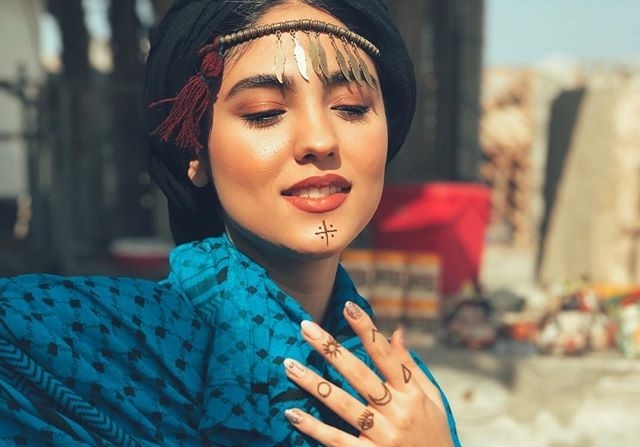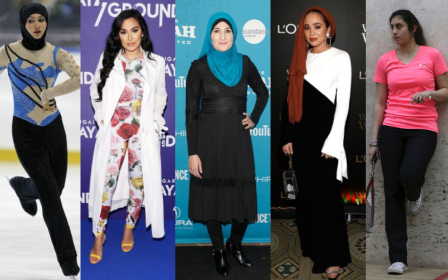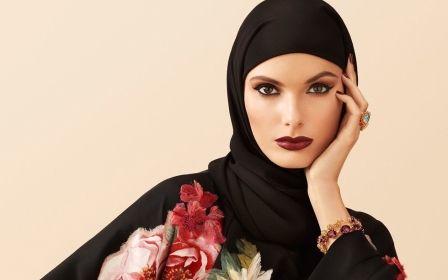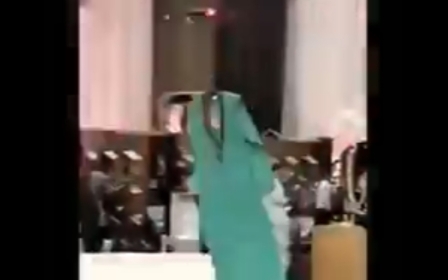Iran street fashion: Seven influencers bending the rules, making waves

In Iran, fashion is less about following the latest trends on the runways, more about using a powerful tool that acts as a form of resistance.
A strict dress code, introduced following the 1979 revolution, when the country transitioned from a monarchy to an Islamic Republic, is imposed by the moral police, known as the Gasht-e Arshad.
The dress code means both men and women are increasingly trying to manoeuvre around government-enforced regulations, finding loopholes that reflects their personal style without having to face official consequences.
'Most women do not cover their hair in Iran, especially among young people'
- Hoda Katebi, author
The result has been the emergence of a distinctive and personal style based on creativity and innovation.
Iranian American fashion designer and activist, Hoda Katebi, author of Tehran Streetstyle, a book about Iranian street fashion, says people have increasingly challenged the dress codes in recent years.
Stay informed with MEE's newsletters
Sign up to get the latest alerts, insights and analysis, starting with Turkey Unpacked
“Most women do not cover their hair in Iran, especially among young people,” she says. “They let their scarf fall back and sometime wear it on their shoulders letting their hair show and when the police come up they quickly put it back on.”
On her website, Katebi explains that one of her missions when writing her book, was to challenge the domestic mandatory dress code in Iran.
Although regulations in Iran have influenced fashion, President Hassan Rouhani has signalled in the past that he wants to loosen up dress code enforcement, although stopped short of saying that the saying the hijab should be voluntary.
But there is still a long way to go: in 2018, more than 100 women’s rights activists were arrested or remanded in detention during what activists termed a "sinister crackdown".
Yet the fashionistas persist. And, as usual the best source for some of the strongest and most offbeat ideas is online.
1. Sistyle
Instagram: @_sistyle_ Posts: 114 Followers: 45.2k Following: 148
Sistyle’s page is dedicated to showcasing daily inspirations. The girls mix elegant pieces with more everyday casual wear to make it practical and wearable, with an authenticity that chimes with their own style.
One common feature of their posts is a long overcoat which comes in a plethora of colours and designs. The long and traditionally loose overcoat is a key hallmark of modern-day Iranian street style that allows the wearer to cover up easily without having to layer several items.
2. Sanaz Diary
Instagram: @sanaz_diary Posts: 215 Followers: 119k Following: 1,279
Iranian street style is vibrant, despite the misconception that the government only allows dark clothing.
Sanaz_diary’s Instagram page is a classic example of the styles that can be seen across Iran, where people can be seen layering with bright colours, textures and being experimental in their fashion choices.
Typically women can be seen pairing skinny jeans or looser fitted jeans with a shorter top and long overcoat. Clashing patterns and prints often give outfits a more "alternative" feel.
3. Mehrnoosh Saaneei
Instagram: @mehrnoosh.saaneei Posts: 294 Followers: 119k Following: 2
The loose, draping scarf, frequently seen on on the streets of Iran, is another wardrobe staple.
Its evolution stems from the strict code enforcing women to wear a hijab and long-loose fitting clothes. Over time, women became more relaxed with the restrictions, letting more hair show from under their hijab and wearing clothes that resembled more Western styles.
Four decades on, more and more women – as Mehrnoosh Saaneei showcases here - are daring to experiment with their looks and combine traditional with contemporary.
4. Ramina Torabii
Instagram: @raminatorabii Posts: 437 Followers: 276k Following: 49
Ramina often swaps out her loosely draped scarf for a hat, which is also permissible but less seen in Iran. Her style fluctuates between edgy looks including biker jackets and graphic t-shirts to more feminine long dresses.
5. Negzila
Instagram: @negzila Posts: 986 Followers: 38.5k Following: 1,116
Western and designer brands are also incorporated into attire. Most women tend to wear a statement overcoat or choose bright, sometimes neon, colours in their outfits as the long coats can hide the clothes beneath.
Scarf styles also differ: some wear rectangle designs whereas others, as seen here, opt for squares tied under the chin.
6. Royasheykhi
Instagram: @royasheykhi Posts: 111 Followers: 75.3k Following: 222
Royasheykhi’s page exemplifies how Iranian women do not allow dress codes to impair their sense of style.
Noteworthy looks include oversized jackets and duster coats paired with skinny jeans. Floaty maxi skirts and silhouettes paired with trainers are used to toughen the look.
7. Maryam_shbnd
Instagram: @maryam_shbnd Posts: 837 Followers: 209k Following: 85
Midi and maxi skirts are another way to adhere to the dress code without resorting to jeans or trousers, merging global brands and designs with traditional Iranian prints, textures and patterns.
Regulations are enforced more in the summer months when it is warmer: women opt for lighter fabrics, draping the scarf more loosely or letting it slip off more than usual.
This article is available in French on Middle East Eye French edition.
Middle East Eye delivers independent and unrivalled coverage and analysis of the Middle East, North Africa and beyond. To learn more about republishing this content and the associated fees, please fill out this form. More about MEE can be found here.




